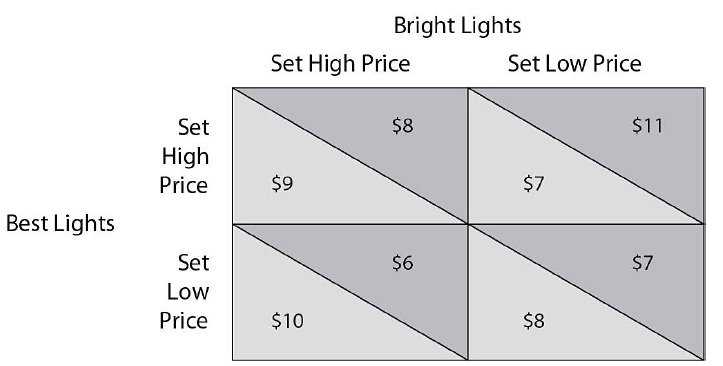The consumer maximizes his total utility (measured in money terms) when, at his chosen quantity of every good he buys, marginal utility
A. equals zero.
B. divided by price equals zero.
C. equals price.
D. equals total utility.
Answer: C
You might also like to view...
Explain the difference between a nominal value and a real value
What will be an ideal response?
Unlike Germany, Japan has
A) a suppressed corporate debt market. B) laws against banks holding corporate stock. C) a large stock market. D) close ties between a firm and a single bank.
Refer to the payoff matrix below. Which of the following is true for Bright Lights?

A) Their dominant strategy is to set a Low Price.
B) They do not have a pure strategy.
C) They do not have a dominant strategy.
D) Their dominant strategy is to set a High Price.
In a market, to find the total amount supplied at a particular price, we must
a. sum the quantities that individual firms are willing and able to supply at that price. b. calculate the average of the quantities that individual firms are willing and able to supply at that price. c. sum the costs that individual firms incur to supply the product at that price. d. account for all determinants of demand.